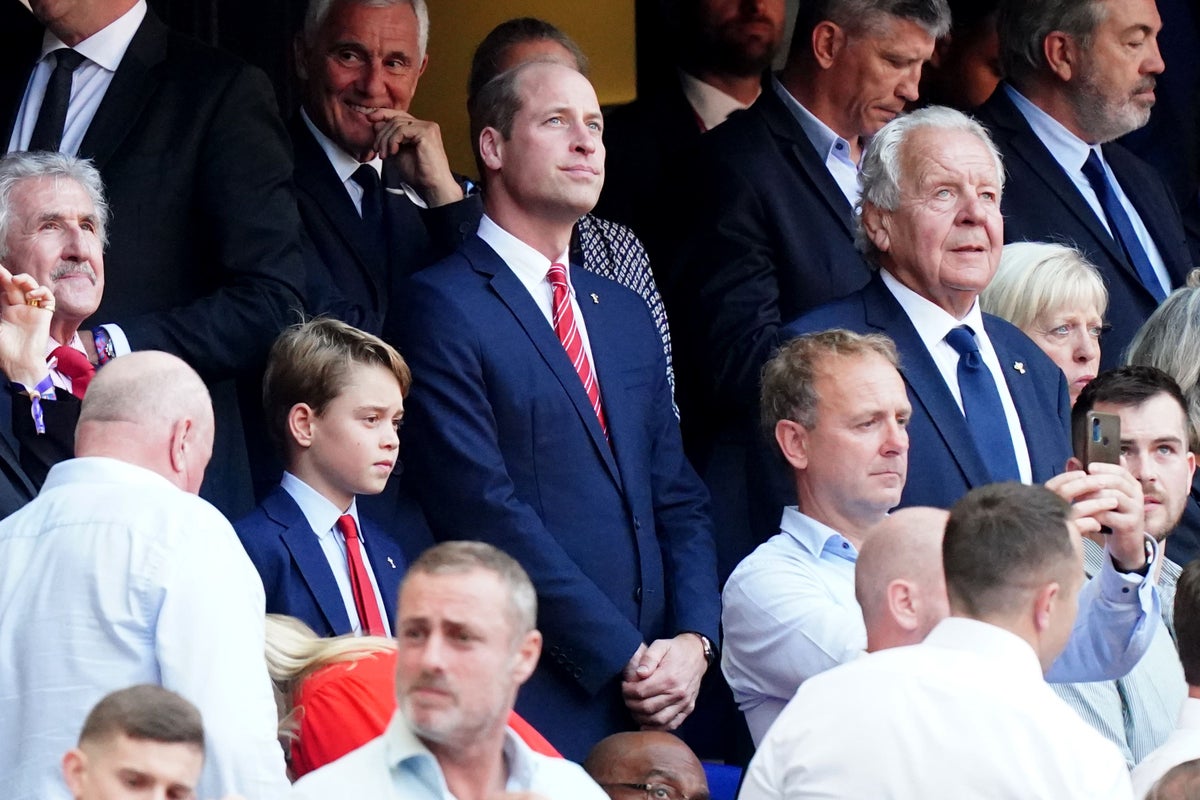Prince William and his eldest son, Prince George, share many similarities, from their striking resemblance that could lead to mistaken identities as twins to their shared destiny as future kings of England.
However, one notable difference sets them apart: their handedness.
Royal watchers have speculated on which hand young George writes with, with many believing he might have inherited his father’s left-handedness.
This belief was fueled when William was seen signing his name at a recent event.
Yet, a closer look suggests that George may follow in the footsteps of his grandfather, King Charles III, as a right-handed writer. This was captured during a heartwarming outing last year when George, along with his mother Catherine and siblings, participated in a special Christmas initiative at the Baby Bank in Maidenhead. In a charming moment shared on the royal family’s social media, George was seen confidently writing with his right hand.
This trait aligns George with the majority of the royal family. Interestingly, while Prince William is left-handed, his aunt, the Duchess of Edinburgh, Sophie, has frequently been photographed writing with her left hand. Additionally, Prince William’s great-grandfather, King George VI, although primarily right-handed, was known to be naturally left-handed, demonstrating a rich history of mixed handedness within the family. Queen Victoria, too, is thought to have been left-handed, using her left hand for painting despite being depicted riding with her right.
Aside from their writing habits, Prince William’s passion for aviation is a legacy he is keen to pass on to George. Recently, the young prince took his first flying lesson at the age of 11, soaring into the skies with an instructor while his parents watched proudly from the ground at White Waltham Airfield, a short drive from their Windsor home.

The upbringing of future monarchs has traditionally been steeped in duty, often under the watchful eyes of the public. However, Prince William is determined to provide his children with a more balanced childhood compared to his own, which was marked by strict royal expectations during the 1980s and 1990s. He strives to give George and his siblings a taste of normalcy amidst their royal responsibilities.
The father-son duo is also known for their shared love of sports. They have been spotted together at various matches and events, enjoying moments of bonding. Just last month, George attended the FA Cup final at Wembley with William, where they both wore matching ties. Their shared excitement was evident as they cheered together and George even helped William present medals to the Manchester United and Manchester City teams.
Their sporting adventures extend to cricket and rugby as well. Prince William, a former player of water polo and rugby during his university years, has been keen to share these experiences with George. The pair has attended numerous Aston Villa matches, showcasing William’s longtime allegiance to the club. Notably, one April match marked George’s first public appearance since the Princess of Wales announced her cancer treatment; he sported an Aston Villa scarf, cheering enthusiastically as they triumphed over Lille.

In a memorable trip to France last year, father and son attended the Rugby World Cup, watching Wales take on Argentina from the presidential box. They also made headlines during the Ashes at Lord’s, where George joined William to watch England compete against Australia.
As Prince William and Prince George continue to build their bond through shared interests and experiences, their unique traits add a fascinating layer to their royal legacy. The future of the British monarchy looks promising with this dynamic duo at the helm, showcasing the blend of tradition and modern parenting.